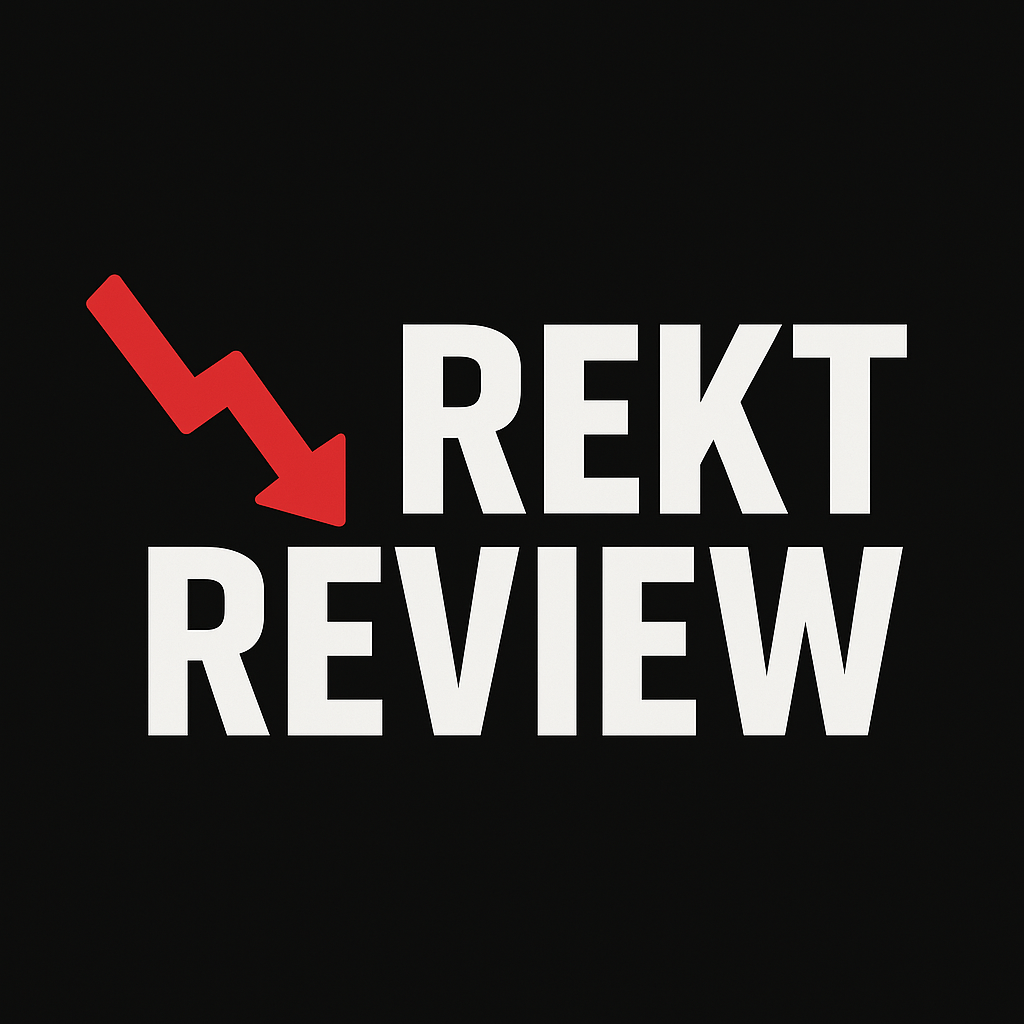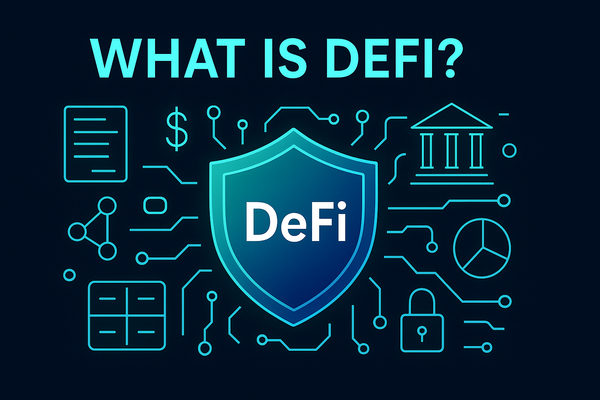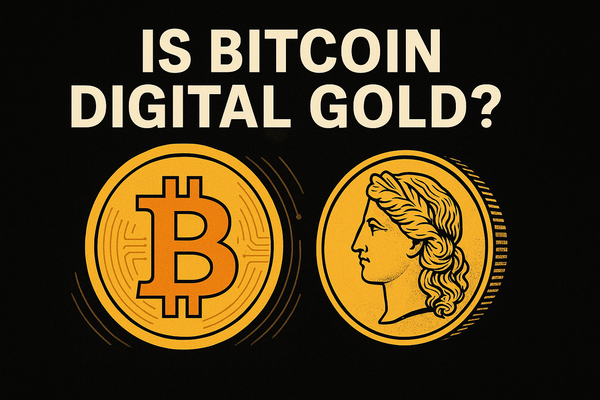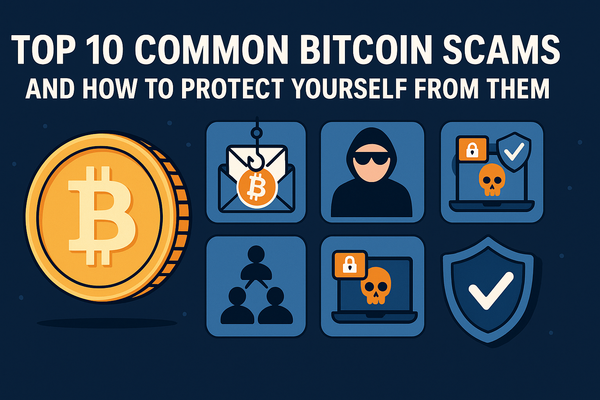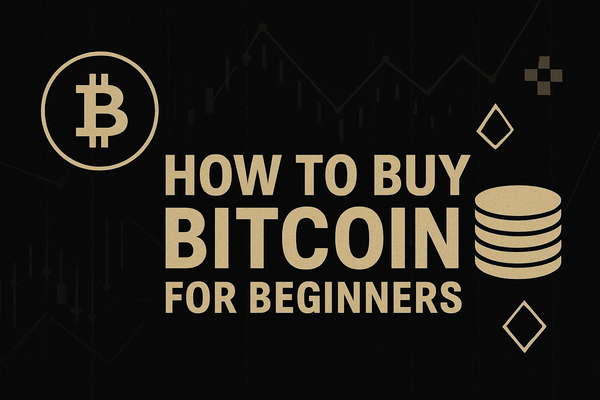How Bitcoin Mining Works: A Beginner-Friendly Guide to the Process Behind BTC
A clear, beginner-friendly breakdown of how Bitcoin mining works. Learn the process, tools, rewards, and future of mining in this up-to-date 2025 guide.
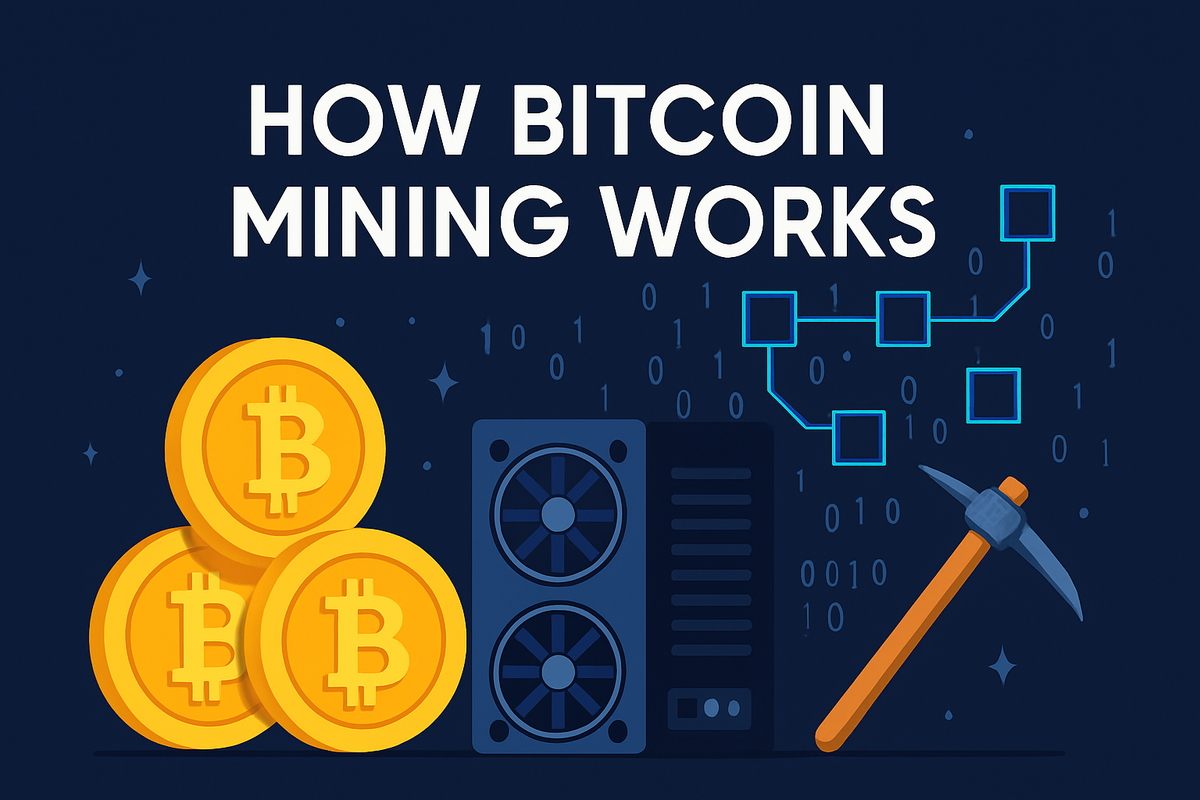
Bitcoin may be best known as a digital currency, but its operation relies on a sophisticated process called mining. Far from digging in the ground, Bitcoin mining involves powerful computers solving complex mathematical problems to validate transactions and secure the network.
This behind-the-scenes mechanism is what keeps Bitcoin decentralized and trustworthy. Miners are the backbone of the blockchain, ensuring every transaction is legitimate and adding new blocks to the public ledger. In return for their efforts, miners are rewarded with newly minted bitcoins and transaction fees — a key part of how Bitcoin circulates.
Understanding how Bitcoin mining works is essential for grasping the bigger picture of how cryptocurrencies function. Whether you're considering mining yourself, investing in Bitcoin, or simply curious about the tech, this article will walk you through the process — from hashing algorithms to energy usage and beyond.
What Is Bitcoin Mining?
Bitcoin mining is the process by which new bitcoins enter circulation and transactions are confirmed on the blockchain. It plays a dual role: issuing new coins and maintaining the integrity of the decentralized network.
At its core, mining involves solving cryptographic puzzles — specifically, finding a unique number called a nonce that, when combined with data from the block and passed through a hashing algorithm (SHA-256), produces a result below a target threshold. This “proof of work” confirms the miner has invested computational effort to find the solution.
Once a valid block is found, it’s broadcast to the network for verification. If accepted, it’s added to the blockchain, and the successful miner receives a block reward — currently 3.125 BTC as of the latest halving — plus any transaction fees contained in the block.
This process occurs roughly every 10 minutes and is competitive, meaning thousands of miners worldwide race to solve each block first. The difficulty of the puzzle adjusts automatically every 2,016 blocks (~2 weeks) to ensure a consistent block time, regardless of how much computational power is added to the network.
Without mining, Bitcoin would have no secure way to validate transactions, prevent double-spending, or issue new currency in a trustless environment.
The Mechanics of Bitcoin Mining
Bitcoin mining is often described as solving puzzles — but what does that really mean? Let’s break down the steps involved in the mining process.
First, miners gather unconfirmed transactions from the Bitcoin mempool (memory pool). These transactions are bundled together into a candidate block. To add this block to the blockchain, the miner must find a specific value — called a nonce — that, when combined with the block’s contents and passed through Bitcoin’s SHA-256 hashing algorithm, produces a hash that begins with a required number of leading zeros.
This is the essence of Proof of Work (PoW). It’s a trial-and-error process: miners may try billions or trillions of nonce values before hitting the target. There’s no shortcut — only raw computing power gives miners an edge. This is why specialized hardware (like ASICs) dominates the space.
Once a valid hash is found, the miner broadcasts the block to the network. Other nodes independently verify that the block’s hash is valid and that all transactions follow Bitcoin’s consensus rules. If everything checks out, the block is added to the blockchain, and the miner earns the block reward.
This process happens roughly every 10 minutes, and the difficulty of the puzzle is dynamically adjusted every 2,016 blocks to maintain that schedule. If more miners join the network and add hash power, the difficulty rises to keep block production steady.
This mechanism makes Bitcoin tamper-resistant. Any attempt to alter past blocks would require redoing the proof of work for that block and all blocks after it — an impractical task unless one controls over half the network’s total hash rate.
Mining Hardware and Software
To mine Bitcoin competitively today, specialized hardware is a necessity. In the early days, enthusiasts could mine using standard laptops or desktop CPUs. Then came GPUs (graphics processing units), which offered better parallel processing. But now, the industry is dominated by ASICs — Application-Specific Integrated Circuits — designed solely for mining Bitcoin.
ASIC miners are built to perform the SHA-256 hashing algorithm at incredible speeds while consuming less energy per hash compared to CPUs or GPUs. Popular models like the Antminer S19 or WhatsMiner M30S can perform over 100 terahashes per second, but they also require significant upfront investment and electricity.
On the software side, miners use programs that connect their hardware to the Bitcoin network or a mining pool. Some of the most popular Bitcoin mining software includes CGMiner, BFGMiner, and EasyMiner. These programs allow miners to monitor hash rates, temperatures, fan speeds, and earnings.
Mining setups also require proper configuration. That includes a reliable power supply, cooling solutions, stable internet, and a secure digital wallet to receive payouts. Many large-scale operations use custom-built mining rigs and manage them in warehouse-style facilities with optimized airflow and climate control.
While it’s technically possible to mine solo, most miners connect to mining pools to combine hash power and share rewards, improving payout consistency. We’ll explore that in the next section.
Mining Pools and Solo Mining
Bitcoin mining can be done in two primary ways: solo mining or pool mining. Each has its own trade-offs in terms of risk, reward, and accessibility.
Solo mining means a miner works independently, attempting to solve blocks on their own. If successful, they receive the full block reward and all transaction fees. However, the odds of finding a block solo are extremely low unless the miner controls a vast amount of computational power. For most individuals, solo mining is a high-risk, low-probability endeavor.
Mining pools, on the other hand, are groups of miners who combine their hash power to increase the collective chance of solving a block. When the pool successfully mines a block, the reward is distributed among members based on their contributed hash rate. This model offers smaller but more regular payouts, making it the preferred option for most miners today.
Popular mining pools include Foundry USA, Antpool, and F2Pool. Joining one typically involves pointing your mining hardware to the pool’s server and entering your payout address.
While solo mining might appeal to purists or hobbyists, mining pools are the practical choice for consistent earnings and lower variance in income.
Rewards and Incentives
Bitcoin mining is financially incentivized to encourage participation and secure the network. Miners earn income through two main sources: block rewards and transaction fees.
The block reward is a fixed number of bitcoins awarded to the miner who successfully adds a new block to the blockchain. When Bitcoin launched in 2009, the reward was 50 BTC. This amount is cut in half approximately every four years in an event known as the halving. As of April 2024, the current reward is 3.125 BTC per block.
In addition to the block reward, miners collect transaction fees from the payments included in each block. These fees vary depending on network congestion and transaction size, and they become increasingly important as the block reward declines over time.
Together, these rewards provide a financial motive for miners to contribute computational power to the network. However, profitability is heavily influenced by factors like electricity cost, hardware efficiency, mining difficulty, and Bitcoin’s market price.
As rewards decrease over time due to halvings, the long-term sustainability of mining may rely more heavily on transaction fees, especially if Bitcoin continues to scale as a settlement layer for high-value transfers.
Environmental Impact
Bitcoin mining has come under increasing scrutiny due to its energy-intensive nature. Proof of Work requires miners to perform massive amounts of computations, consuming substantial electricity — much of which, historically, came from fossil fuels.
Critics argue that this makes Bitcoin environmentally harmful, especially when compared to traditional payment systems or alternative blockchains using Proof of Stake. High-profile studies have compared Bitcoin’s energy usage to that of entire countries, though these comparisons often lack nuance.
Supporters point out that a growing portion of mining is powered by renewable energy. In regions like Iceland, Canada, and parts of the U.S., miners leverage hydroelectric, geothermal, or wind power to reduce costs and environmental impact. Some operations even use stranded or excess energy that would otherwise go to waste.
There’s also a movement toward greater efficiency. Newer ASIC models use less energy per hash, and miners are increasingly locating in areas with abundant clean energy. Industry groups like the Bitcoin Mining Council track and promote sustainable practices.
Still, the debate continues. While Bitcoin’s decentralization and security come at a cost, innovations in clean energy and mining optimization may help reduce its ecological footprint over time.
Legal and Regulatory Considerations
Bitcoin mining exists in a complex and often shifting regulatory landscape. Since mining consumes significant energy and involves earning digital assets, governments view it through various lenses — from industrial activity to financial speculation.
Some countries, like China, have imposed outright bans on mining due to energy concerns and capital controls. Others, such as El Salvador and parts of the United States, actively encourage mining by offering tax incentives or access to cheap, renewable power.
In jurisdictions like the European Union, regulation is evolving. Discussions around environmental impact, financial compliance, and anti-money laundering (AML) have led to proposed legislation that could indirectly affect miners.
Miners must also comply with local utility rules, business licensing, and in some cases, data center regulations. The legal environment can influence where miners choose to set up operations and how viable it is to remain competitive.
Navigating this landscape is critical for anyone planning to mine at scale.
Future of Bitcoin Mining
The future of Bitcoin mining is shaped by technological innovation, economic pressure, and regulatory evolution. As block rewards continue to decline due to halvings, miners will rely more heavily on transaction fees for revenue, shifting the economic model of the network.
On the technology front, advancements in ASIC efficiency and cooling systems aim to reduce energy consumption and operating costs. Additionally, some companies are exploring liquid immersion cooling and modular mining units to maximize performance in a sustainable way.
Geographically, mining is becoming more decentralized. After China's 2021 ban, hash power spread to North America, Central Asia, and parts of Latin America. This dispersion strengthens the network's resilience.
There’s also a growing push for green mining, with operations seeking carbon-neutral or carbon-negative status. In the long term, Bitcoin mining may integrate with renewable infrastructure, acting as a buyer of last resort for excess energy.
Despite challenges, mining remains a dynamic and evolving cornerstone of the Bitcoin ecosystem.
How Bitcoin Mining Works FAQ
Bitcoin mining is the process of validating transactions and securing the network by solving cryptographic puzzles, which also introduces new bitcoins into circulation.
Mining requires solving complex mathematical problems, which demands high computational power best provided by specialized ASIC devices.
A mining pool is a group of miners who combine their computing resources to increase the chances of earning rewards, which are then split proportionally.
Miners earn a block reward of new bitcoins and transaction fees when they successfully validate a new block on the blockchain.
Mining consumes significant energy, but some operations use renewable sources, and ongoing efforts aim to improve efficiency and sustainability.
